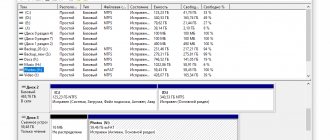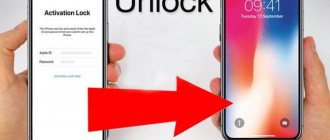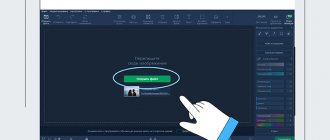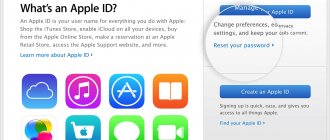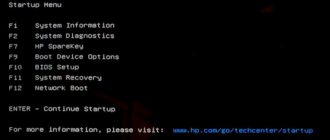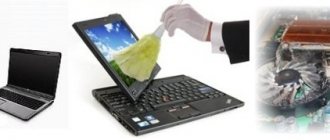Hardware ID (HID) is an identifier for your computer, which is generated based on data about your hardware. This data complex includes many components, such as the motherboard, RAM, processor, hard drives, and so on. As a result, each computer has its own unique identifier. Rare coincidences cannot be excluded, but these are hundredths of a percent in the total mass of computers.
Just run the Key Collector program: the HID will appear in the start window. You do not need to use any third-party programs for this. You can download the Key Collector program from the link: setup-x86.exe (suitable for both 32-bit and 64-bit systems).
After installing and launching the program, you will see a window in which your current HID will be indicated. You can copy it manually, or click on the copy to clipboard button.
Key Collector provides 4 HID options
: the first one is the main one, the rest are backup ones. We recommend indicating the first one in your purchase application, but indicating any of the other three will not be an error.
In rare cases, after filling out an application to purchase a program or change a license, technical support may ask you for an additional identifier (not only the first HID in the list, but also another one, for example, a second one).
When the PC hardware configuration changes (adding a new disk, RAM, reinstalling the OS, etc.), the computer HID also changes. In this case, the previously issued license ceases to work. This appears as a window with the message “The license file is missing from the program folder.”
.
Any piece of hardware has an ID that identifies the device (Hardware ID). This identifier allows operating systems to recognize devices and install the software required for them. In Windows, this means that a device driver is installed for the hardware. The hardware identifier identifies the device's bus type, manufacturer (vendor), and the device itself. In some cases, additional subsystem identifiers provide information about the differences between device variants.
What is a computer ID?
A computer ID is an individual number expressed in hexadecimal notation and directly associated with the network card. It is under this number, regardless of whether the user uses Windows, Linux or macOS, that the device is visible on the network - and it is by ID, as opposed to IP, that it can really be found.
Important: The computer ID is often called the MAC address - later in our material these concepts will be used as synonyms.
Change group id
To change the group address you also do not need any special knowledge. You need to proceed as follows:
- Open a community that is subject to the administrative rights of the VK account owner.
- On the right under the group avatar, click the “Manage” link.
- In the “Basic information” settings block, find the line “Page address”.
- Delete the input field value and enter a new one.
- Click the “Save” button.
We recommend: How to change login on VKontakte
Reference. The phrase specified in the address has some impact on the search promotion of the group. To increase the position of a page in Google or Yandex results, you should select an address that will contain the main keyword or phrase. For example, “soft toys in Moscow”.
Similarly, you can change the address of an event, public page, thematic community, etc. For each type of community, you will need to visit the settings page and indicate the desired address.
As it becomes clear from the presented material, the change procedure is performed in a few clicks. A much more difficult task may be choosing a phrase for a new address. However, with some ingenuity, you can create a unique set of characters that characterizes the owner of the page.
How to find out the computer ID?
Viewing the ID of a PC or laptop under Windows is as simple as connecting a microphone to the computer; this can be done using standard OS tools, as well as using one of the most famous third-party programs; The three simplest methods will be discussed below.
Command line
A user who already has an idea of how to find out what operating system is on a computer will probably be able to use the command line functionality without much difficulty - fortunately, he will only need to enter one command. To view the computer ID, you need to do the following:
- Open the command line by typing the appropriate phrase in Windows Search.
- Enter the command ipconfig /all without extra spaces and quotes in the window that opens and press the Enter key.
- Find the “Physical Address” section in the list displayed - this will be the ID or identification number you are looking for.
Important: if hardware virtualization elements or a high-quality VPN client are installed on the computer, the user will see several “Ethernet Adapter” sections containing relevant information. You need to choose a real one, guided either by the name of your provider, or by the absence of “extra” inscriptions in the title.
device Manager
You can find out the computer ID using the “Device Manager” system utility as follows:
- Call up the “Control Panel” menu using “Search”.
- Go to the "System and Security" section.
- Next, go to the “System” subsection.
- In the new window, use the “Device Manager” link located to the right of the main field.
- Find and expand the Network Adapters section.
- Find your real network adapter.
- Right-click on the title and select “Properties” from the menu that opens.
- Go to the “Network Address” section and view or copy the ID in the text field.
Tip: if this field is left empty or under it, in order to find out the ID of your computer or laptop, the user will have to use the first or third of the described methods.
AIDA64
The most convenient application for PCs and smartphones, with which you can view the characteristics of your computer without any additional manipulations. All the user needs is:
- Launch the program and go to the “Network” section.
- Next, go to the “Windows Network” subsection.
- Select your physical (real) network adapter from the list that opens.
- And look at the ID of your computer or laptop in the lower field.
Important: the user can copy data directly in the application by right-clicking on the number and selecting the desired item in the context menu.
Now let's try to change
Another common task is to change the page ID. This is done as follows.
While on your page, open the drop-down menu in the upper right corner. Here select "Settings". In the next step, make sure the General tab is active. Here, find the “Page Address” section. And click on the "Edit" link. A form will open - enter the desired data here. You can use Latin letters, numbers and underscores. When you're done, click on the "Occupy Address" button. If it is free, the changes will be applied and you will have a new id.
Is it possible to change the computer ID?
There are several ways to change your computer ID under Windows:
- purchasing and installing a new network card - this is the simplest and 100% working, but also the most expensive option;
- by finding and downloading a special program on the Internet - however, not all of them work properly;
- Going to Device Manager again.
In the latter case, the user will need:
- In the already familiar “Network Address” field, instead of the existing combination, enter a new one; prerequisite - the second character must be hexadecimal digits 2, 6, A or E; the remaining symbols can be taken from your head.
- After making sure that the entered ID is correct, click “OK” and close “Device Manager”.
- Now the user just needs to restart the computer or laptop and check the ID again - if everything is done correctly, the number should change.
ID of the user who added you to the blacklist
In this case, the easiest way is to use the application again, but if you do not see the point in this, then follow these steps:
- go to the page of the person who added you to the blacklist;
- open “Actions” and use the “Add to bookmarks” item;
- go to “Bookmarks” on your own page and head to the “People” item;
- hover the mouse over the user’s avatar until an image of a magnifying glass appears below it;
- right-click and select “Copy link address”;
- open any text editor and copy the result there.
As a result, you should get a link like this - vk.com/albums0000, where the zeros act as an identification number.
>[overquoting removed] >>client into a virtual machine and try to transfer money, you will inevitably get >>banned. And subsequently you will have to buy a certificate. The second time if you register, >>it will also be banned.
Tested more than once. The Keeper Classic client captures >>several components on a computer. And not only webmoney, but also other >> sites link to hardware. Naturally, each computer generates a different id. The >>MachineID program shows the id of several pieces of hardware. And if, for example, you reflash the BIOS, then the program >> will give a different id. Also, if you change the id screw then >> the program will show the change. > I use the keeper specifically from the virtual machine, because Windows is only available in the virtual machine. > Never had a single problem. Where does this information come from? Yes, guys. But in fact, everything is much simpler! The guy asked a completely correct question about changing the PC ID. Simply due to their ignorance or unwillingness, for some reason, no one can or does not want to answer the question posed. So. No matter how hard you try, changing the ID using “special” programs or editing the registry will not work. Fact! But, if you hear the question correctly, then the user of the social network would like to again get to the resource he is interested in and be either not noticed or an unidentified visitor, since he was previously “banned”. “Ban” by PC ID really exists and is widely used in a social network to protect its provided product. And now about the main thing. HOW TO OVERCOME THE “BAN” OR, in other words, change the hardware ID? First, I'll explain a little how everything works. How exactly does the process of determining your PC ID take place? In order to obtain a user's PC ID, you need to request and receive your PC data for registration on a particular server. The request can be directed to anything. On the ID of the processor or motherboard, or simply on the IP address or on the MAC. Or all at once. Requesting and sending data occurs in “packets”. Naturally, the request program cannot itself read data from your hardware. And the data from your PC, already during the startup of the machine, was compiled and packaged into a text file and is awaiting a request to be sent. But this text file cannot be changed, since it is involved in the process of working in the system. And yet, there is a loophole in the fence. We'll call this loophole "sniffer". “sniffer” is a kind of program that allows you to monitor the current process of packet data exchange. Our task is to intercept the package we need, make changes and, with a repeated request from the server, “attach” the changed package. So. The server needs your PC data and the server makes a request. And accordingly awaits an answer. The process takes place in a matter of seconds. But this won't stop us. The server doesn’t care how quickly the expected response arrives. There is time to solve the problem. Go for it. Details on editing “sniffer” can be found on the Internet.
Is it possible to do this?
You can find out more about what an ID is and how you can find out the address of a user’s page in our separate article! Here we briefly summarize the basic information. Each profile upon registration receives a serial number - ID; it cannot be changed, but you can slightly modify the address bar, in which a word (name) will be displayed instead of a unique number. In this case, the invented word and the unique number will be equivalent - they can be used when searching, in the address bar of the browser, or when analyzing a profile on third-party services.
